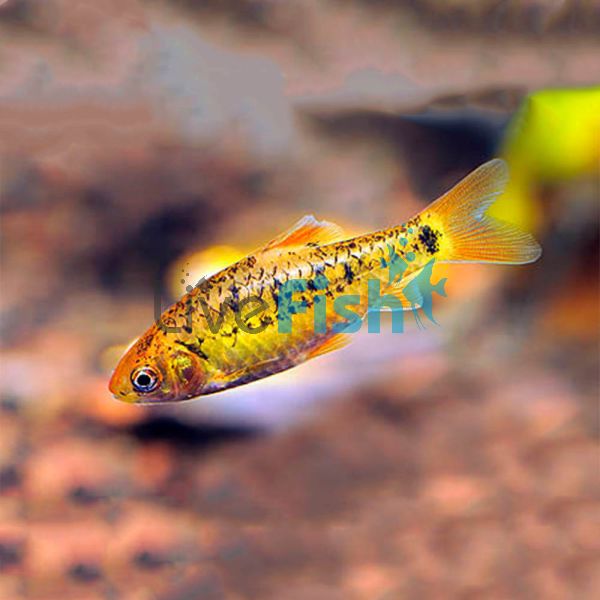Golden Barb 5cm
Goldfish are often one of the first fish that beginner aquarists get attracted to but in most circumstances, goldfish are not suitable for nano aquariums and are quite messy. This is where the gold barb comes in because it is in the same family of goldfish, only reaches 7 cm, can be kept in temperatures as low as 18 degrees, and look like a baby goldfish. These fish are great for all these reasons and more which is why they are a perfect species consideration but they will also add a stunning splash of colour and activity to any tank.
- Buy 4 for $9.35 each and save 10%
- Buy 8 for $8.31 each and save 20%
Golden Barb
Goldfish are often one of the first fish that beginner aquarists get attracted to but in most circumstances, goldfish are not suitable for nano aquariums and are quite messy. This is where the gold barb comes in because it is in the same family of goldfish, only reaches 7 cm, can be kept in temperatures as low as 18 degrees, and look like a baby goldfish. These fish are great for all these reasons and more which is why they are a perfect species consideration but they will also add a stunning splash of colour and activity to any tank.
Golden barbs perfectly encompass their name with the vibrant, golden colour with highlights or orange and yellow. They also have a speckling of black across the body which leads to a black tail spot. The bright yellow colour these fish have, makes them contrast amazingly against a dark background or bright green aquatic plants. Their colouration can be further enhanced with an RBG controllable aquarium light where the red spectrum is higher than the other colours.
Golden barbs can really adapt to a range in the temperature of their environment. They ideally need to be kept between 18 - 26 degrees and a PH of 6.5 - 7.5. These fish remain fairly small at 8 cm which means they can be enjoyed in smaller aquariums as well. Breeding these awesome golden barbs is possible, where females will scatter eggs, and males will then follow and fertilize. Gold barbs are a naturally occurring species as well which is surprising, considering just how bright they are and they can be found in the waterways of China.
Tank Recommendations for Golden Barb
Being a small and relatively easy to care for fish the gold barb can be kept in smaller aquariums with the minimum being 70 liters. This aquarium size allows for a decent school of these barbs along with other community fish if required. Gold barbs do not sport the same fin-nipping behavior as other barb species but they should still be kept in a group of 5 or more to display their best behavior. These fish will look absolutely stunning in a well-planted aquarium with a higher red spectrum in the lighting. They will appreciate a well-planted aquarium but will have little concern over the substrate or hardscape choices.
Suitable Tank Buddies
The gold barb is peaceful fish with no real issues with aggression. They will get along with a wide range of community aquarium fish.
Usually Compatible
Tiger barbs, black neon tetras, angelfish, paradise fish, giant danios, and similar species.
Sometimes Compatible
Slow-moving or smaller bottom-dwelling fish species like chocolate gourami or Khuli loaches. These fish have a high chance of being outcompeted but the active golden barbs.
Rarely Compatible
Any species which would prey on the gold barb like convict cichlids or Oscars.
Feeding your Golden Barb
Golden barbs are a very easy fish to feed. They will take a wide range of pellets, flakes, and frozen foods. Just like any fish though they should be fed a varied diet with a mix of different foods.
The ideal diet would be a good quality micro slow-sinking pellet or crushed flake, supplemented with frozen bloodworms or black worms or even live foods like baby brine shrimp or micro worms.
| Scientific Name | Puntius Semifasciolatus |
|---|---|
| Care Level | Easy |
| Common Names | Golden barb |
| Diet | Omnivore |
| Fish Family | Cyprinidae |
| Lifespan (years) | 5 |
| Max. Length (cm) | 7 |
| Min. Tank Volume (l) | 70 Liters |
| Origin | China |
| Reef Safe | Yes |
| Sociability | Peaceful |
| Venomous | No |
| Water Conditions | 18-26° C, pH 6.5-7.5 |




